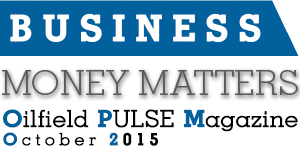To see how important foreign exchange risk can be, simply look at the volatility of exchange rates over the past 10 years.

| Date Published | October 22, 2015 |
| Company | National Bank of Canada |
| Article Author | Benoit Marcoux, Philippe Shebib |
| Article Type | October 2015 Issue |
| Category | Articles, Business |
| Tags | Currency Fluctuations, Foreign Exchange Rate, Hedging Strategy, S&S |
| HUB SEARCH | NationalBank |

To see how important foreign exchange risk can be, simply look at the volatility of exchange rates over the past 10 years.
 When assessing foreign exchange risk as an energy services company, one has to look at a number of elements to determine its own foreign exchange risk and risk tolerance level. For example, sourcing equipment and materials to be paid in foreign currency or business operations in another jurisdiction are two common scenarios in the energy services industry. Financial performance can be negatively impacted when currency volatility affects cost of inputs or when sales or earnings are translated into the home currency. One very important aspect is exchange rate fluctuations, especially for companies that run operations outside Canada or source equipment and raw materials from other parts of the world. In fact, even a company that does business solely in Canadian dollars can be exposed to currency risk if its CAD prices are based on a USD conversion. Thus, the greenback’s central role in the commodities market makes foreign exchange a major risk factor for many Canadian companies. In order to properly assess the risks facing the company, including foreign exchange, it is important to measure the company’s exposure and to consider the possible impact on the expected profit margin.
When assessing foreign exchange risk as an energy services company, one has to look at a number of elements to determine its own foreign exchange risk and risk tolerance level. For example, sourcing equipment and materials to be paid in foreign currency or business operations in another jurisdiction are two common scenarios in the energy services industry. Financial performance can be negatively impacted when currency volatility affects cost of inputs or when sales or earnings are translated into the home currency. One very important aspect is exchange rate fluctuations, especially for companies that run operations outside Canada or source equipment and raw materials from other parts of the world. In fact, even a company that does business solely in Canadian dollars can be exposed to currency risk if its CAD prices are based on a USD conversion. Thus, the greenback’s central role in the commodities market makes foreign exchange a major risk factor for many Canadian companies. In order to properly assess the risks facing the company, including foreign exchange, it is important to measure the company’s exposure and to consider the possible impact on the expected profit margin.
 To see how important foreign exchange risk can be, simply look at the volatility of exchange rates over the past 10 years. The annual trading range (i.e., the difference between the minimum and maximum rates recorded for the year) reached 25% to 29% at the peak of the financial crisis, and since 2010, the average range has held steady around 10%. As a result, revenues at higher-risk businesses have taken a hit of 8% to 13% in each of the past five years. Clearly, the range of movement is much wider than in the past despite central banks’ unprecedented efforts to stabilize the markets! Such impacts could persist, or even worsen, as market stabilization measures are lifted in the coming years.
To see how important foreign exchange risk can be, simply look at the volatility of exchange rates over the past 10 years. The annual trading range (i.e., the difference between the minimum and maximum rates recorded for the year) reached 25% to 29% at the peak of the financial crisis, and since 2010, the average range has held steady around 10%. As a result, revenues at higher-risk businesses have taken a hit of 8% to 13% in each of the past five years. Clearly, the range of movement is much wider than in the past despite central banks’ unprecedented efforts to stabilize the markets! Such impacts could persist, or even worsen, as market stabilization measures are lifted in the coming years.

 For many energy services companies, foreign exchange risk can mean the difference between healthy profits and financial difficulties. A hedging strategy is therefore an absolute must for companies whose purchases or sales are mainly in foreign currency. Our International Trade Managers and FX Traders can analyze your specific situation in no time. They are specialists in their field and have easy-to-use, time-saving tools to help you implement a hedging strategy that could prove to be one of your wisest investments.
For many energy services companies, foreign exchange risk can mean the difference between healthy profits and financial difficulties. A hedging strategy is therefore an absolute must for companies whose purchases or sales are mainly in foreign currency. Our International Trade Managers and FX Traders can analyze your specific situation in no time. They are specialists in their field and have easy-to-use, time-saving tools to help you implement a hedging strategy that could prove to be one of your wisest investments.